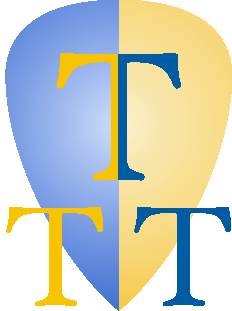 |
 |
|
When I first started using 2mm blocks for Ancient games I based them individually on 20mm frontage bases. Although this had the advantage of making it possible to play games on a handkerchief-sized battlefield, it did make them awkward to handle and too small for my aged gaming mates to see. Having finally taken the hint after seeing some other gamers' efforts at using 2mm on 15mm bases I decided to re-base. The following photos and notes are the result.
|
|
|
Bases
|
|
|
Base Layout
|
|
|
Close Order Foot : Blades, Spears & Pikes |
|

|
|
|
Above : Bd4 & Bd4 General - Use either ABG1 or ABG2 The General's base has the two sets of 2 blocks separated, I now think this is a better arrangement for Bd4 - it makes them distinguishable from Sp4. Don't know why I didn't do that in the first place. Below : Bd3 Uses the same blocks as the Bd4 but this time painted in random colours and hints of armour - as dismounted Knights or Vikings perhaps. |
|
|
|
|
|
|
|

|
|
|
Above & below : Sp4 - Use ABG18 The General in the front base would be better placed in front of the solid 2-ranks of spearmen. That way Bd & Sp would be more easily distinguished from each other. The lower picture has irregular spearmen, their shields and tunics painted in random colours. |
|
|
|
|
|
|
|

|
|
|
Above : Pk4 & Pk4 General The pair of mounted generals JUST fits onto the front of the base. Use ABG16 (as here) or RBG9. Right : another option for Pk using the smaller ABG17. You could also use the RBG33 or 34 blocks. |
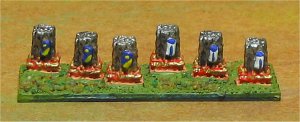 |
|
|
|
|
Loose Order Foot : Warband, Auxilia & Bow |
|

|
|

|
|
|
Above : Wb3 & Wb3 General - use ABG8 Place the blocks in either a 2-1 or 1-2 formation but all touching each other. Generals should be in the front rank and you could use the 2-horse chariot (ABG7) as an alternative general for those armies, such as Celts, that use them. Below : Wb4 & Wb4 General Arrange these as a solid block, the irregular appearance of the figures will distinguish them from the heavy foot elements. |
|

|
|
|
|
|

|
|
|
Above : Ax3 & Ax4 General - use ABG13 Arrange these in a looser formation than Wb, with space between the bases. Below : Ax or Bw (alternative) - using ABG24 This block has 12 regularly spaced individual figures and produces a good loose formation. The problem is that this block is often rather poorly cast and you can't always rely on getting good blocks. Note the general's element has one block split either side of the general. |
|

|
|
|
|
|

|
|
|
Above : Bw3 & Bw3 General - uses ABG20 Possibly the easiest block to paint. Lay out with space between the 2 ranks in a 2-1 formation. Below : Bw4 Lay out as a solid block, bowmen should be distinguishable from the other close order foot types as they don't have shields. |
|

|
|
|
|
|
|
Other Foot : Psiloi, Hordes, Artillery & War Wagons |
|

|
|
|
Above : Ps - use ABG3 (javelins) or ABG12 (bows) Cut the blocks into smaller groups and randomly distribute them over the base. Below : Hd - use any mix of ABG6 and BG23 In the elements shown the front rank is 2 ABG6 and the other 3 blocks are all BG23. Any arrangement with more than 4 blocks would be OK. |
|

|
|
|
|
|

|
|
|
Above : Ar - use ABG25 (or RBG30 for Medievals) Below : WWg - uses RBG31 (armoured wagon), RBG30 (bombard) and some cut up RBG22 (dismounted dragoons) This version represents a Medieval WWg, not quite sure what I'd use for other periods. |
|
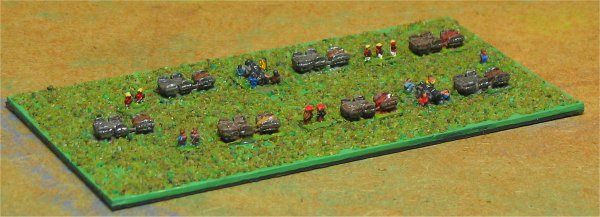
|
|
|
|
|
|
Mounted, the Basics : Knights, Cavalry and Light Horse |
|

|
|
|
Above : Kn3 & Kn3 General - use any combination of ABG14 (BG10 similar) & RBG13/14. Arrange in a 1-2 formation with all bases touching. Generals should be out in front Below : Kn4 - use ABG22 Arrange as two separate lines of 2 blocks with a small space between them. |
|

|
|
|
|
|

|
|
|
Above & below : Cv & Cv Generals - use either ABG4 (regulars) or ABG8 (irregular) Arrange in either 1-2 or 2-1 formation with the general between the separated lines or within the front line. This makes them different to Kn. |
|

|
|
|
|
|

|
|
|
Above & below : Lh - use ABG10 (javelins) or ABG9 (bows) As with Ps, cut the bases into smaller groups and arrange on the base. If you use single figures then a passable base of circulating light horse can be modeled (as above). |
|

|
|
|
|
|
|
Mounted, the Rest : Camels, Chariots & Elephants |
|
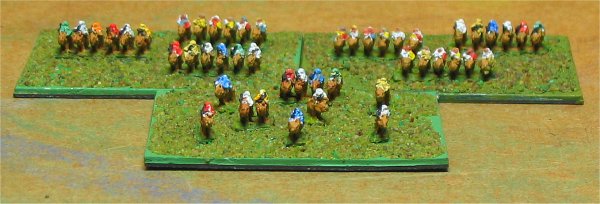
|
|
|
Above : Cm3 & Cm2 - use ABG23 The Cm2 are just cut up and randomly distributed. The Cm3 have the 3 blocks arranged in a less regular fashion than Cv. |
|
|
|
|

|
|
|
Above : LCh - use ABG7 5 blocks arranged as you wish. I use the 'arrowhead' formation to indicate the general if I need one. Below : HCh - use ABG19 4 blocks arranged over the base with a 'square' formation indicating the general, either that or the white horses. Right : SCh Just a pair of ABG19. Looks a bit bare but it needed to be different to other chariot bases. |
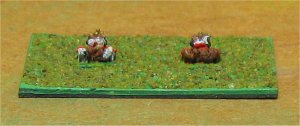
|

|
|
|
|
|

|
|
|
Above : El - using ABG15 (Indian, warriors astride) Use 4 elephant blocks (or 5 for a general). Add a couple of bases of light infantry too, if you fancy it. Below : El - using ABG21 (with Howdah)
|
|
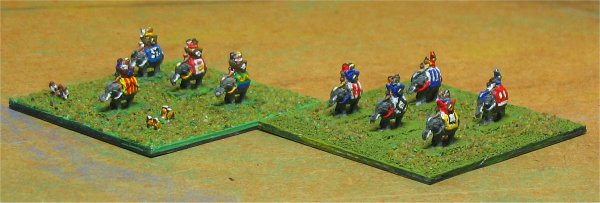
|
|
|
|
|
|
These are not the only possibilities but they do make a set of elements that can be distinguished from one another and still look like the armies they are supposed to represent. |
|
|
Army 2/3 : Classical Indian |
|
|
Army 2/56 Early Imperial Roman |
|